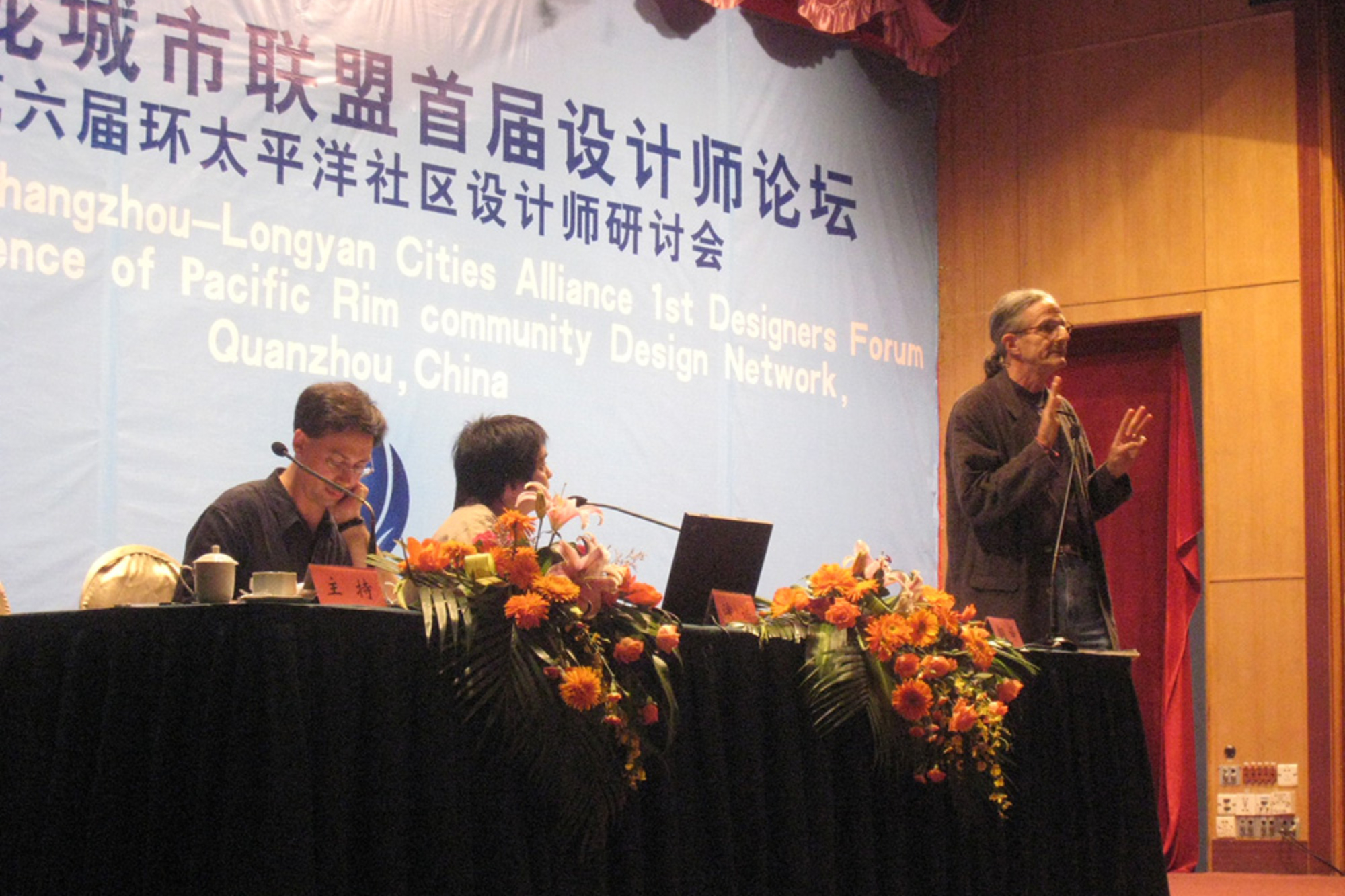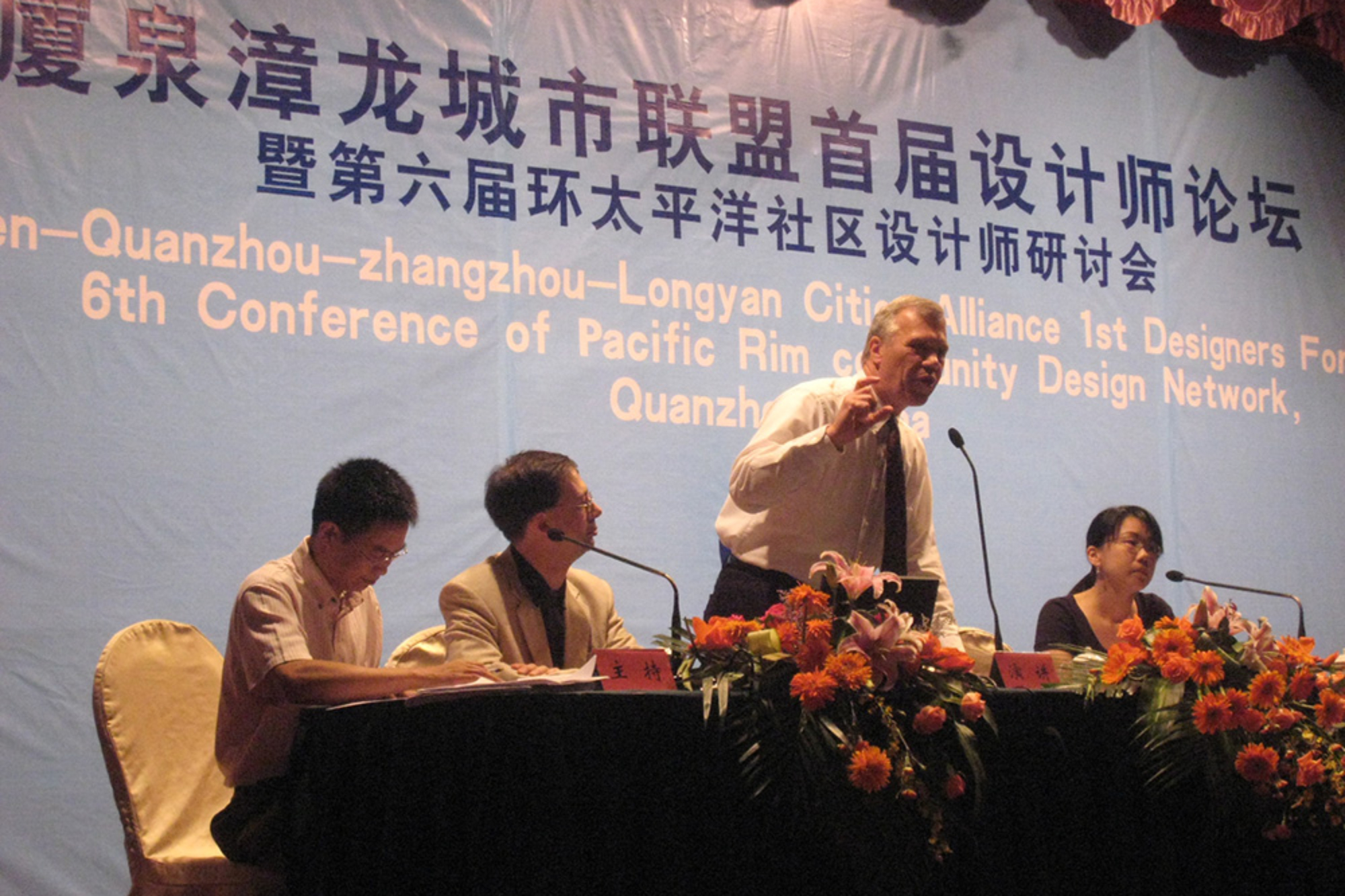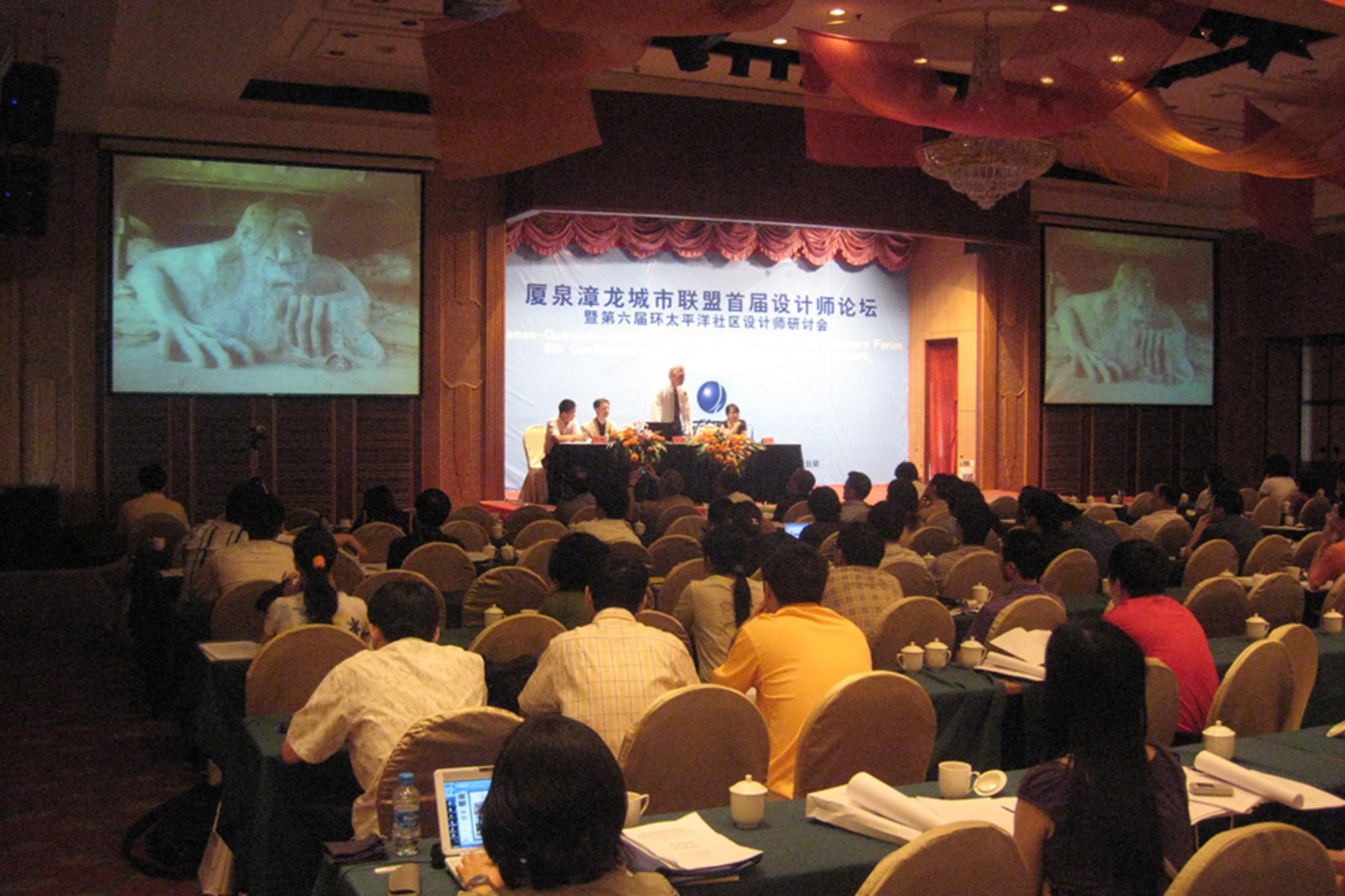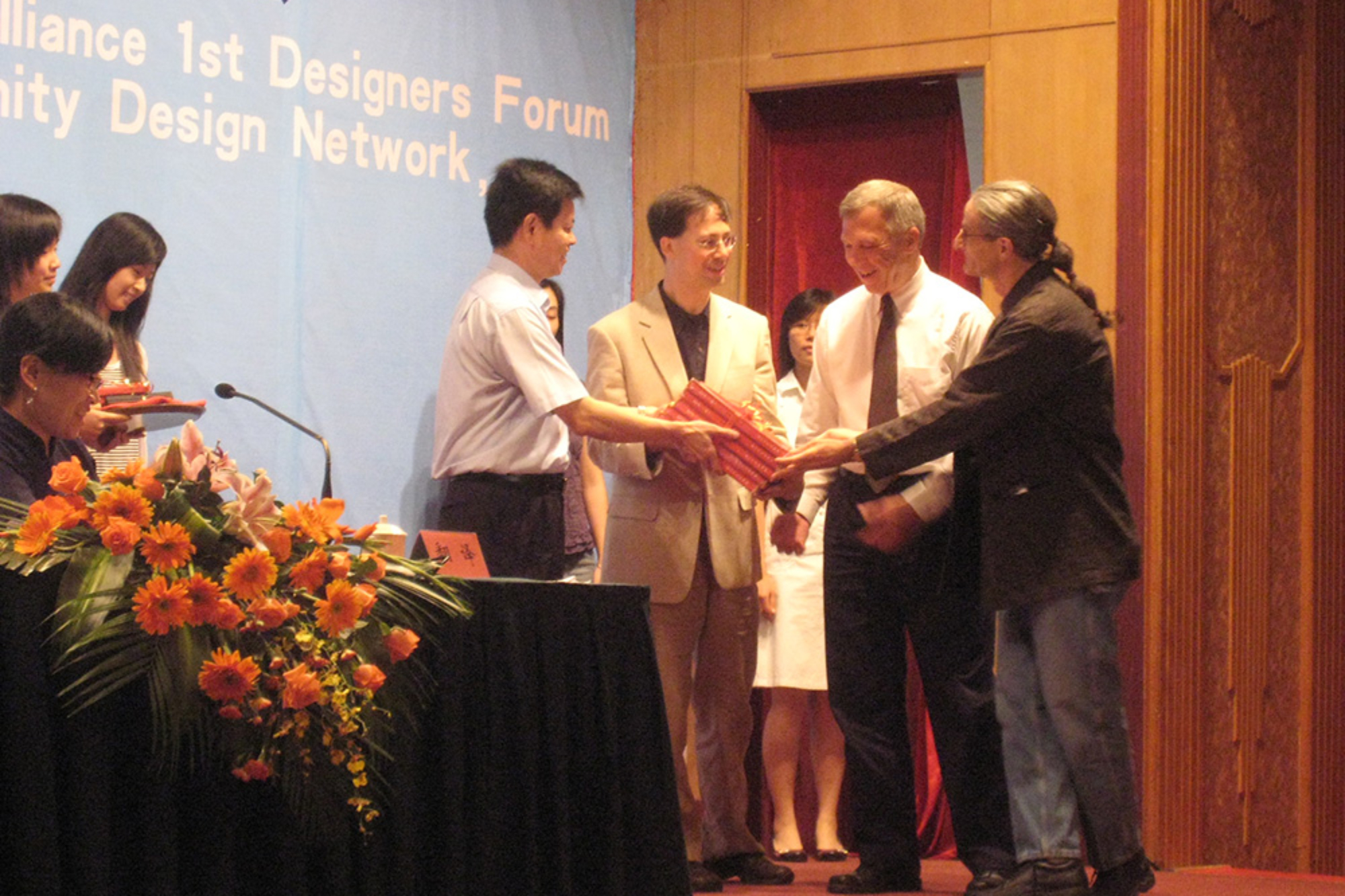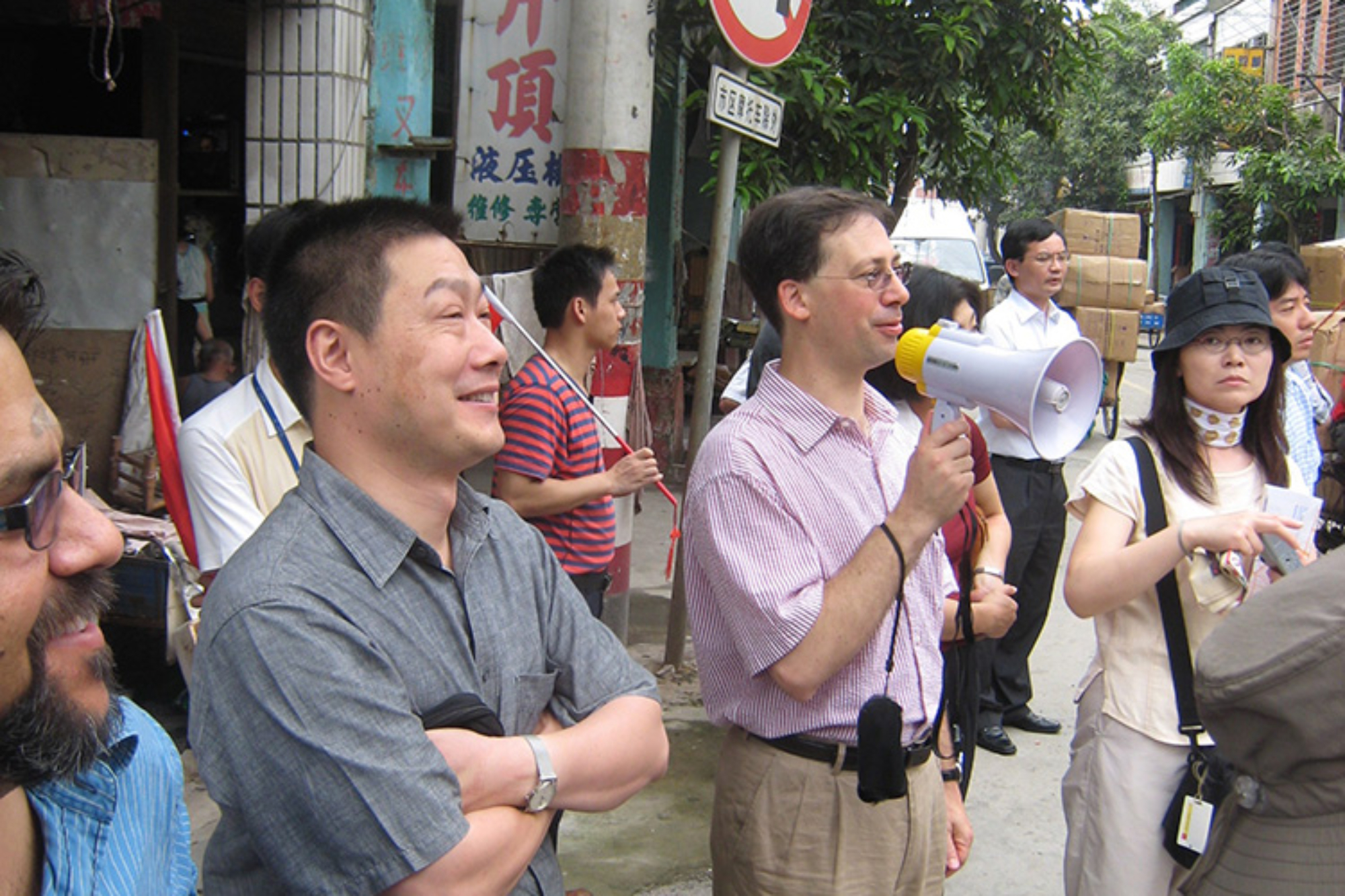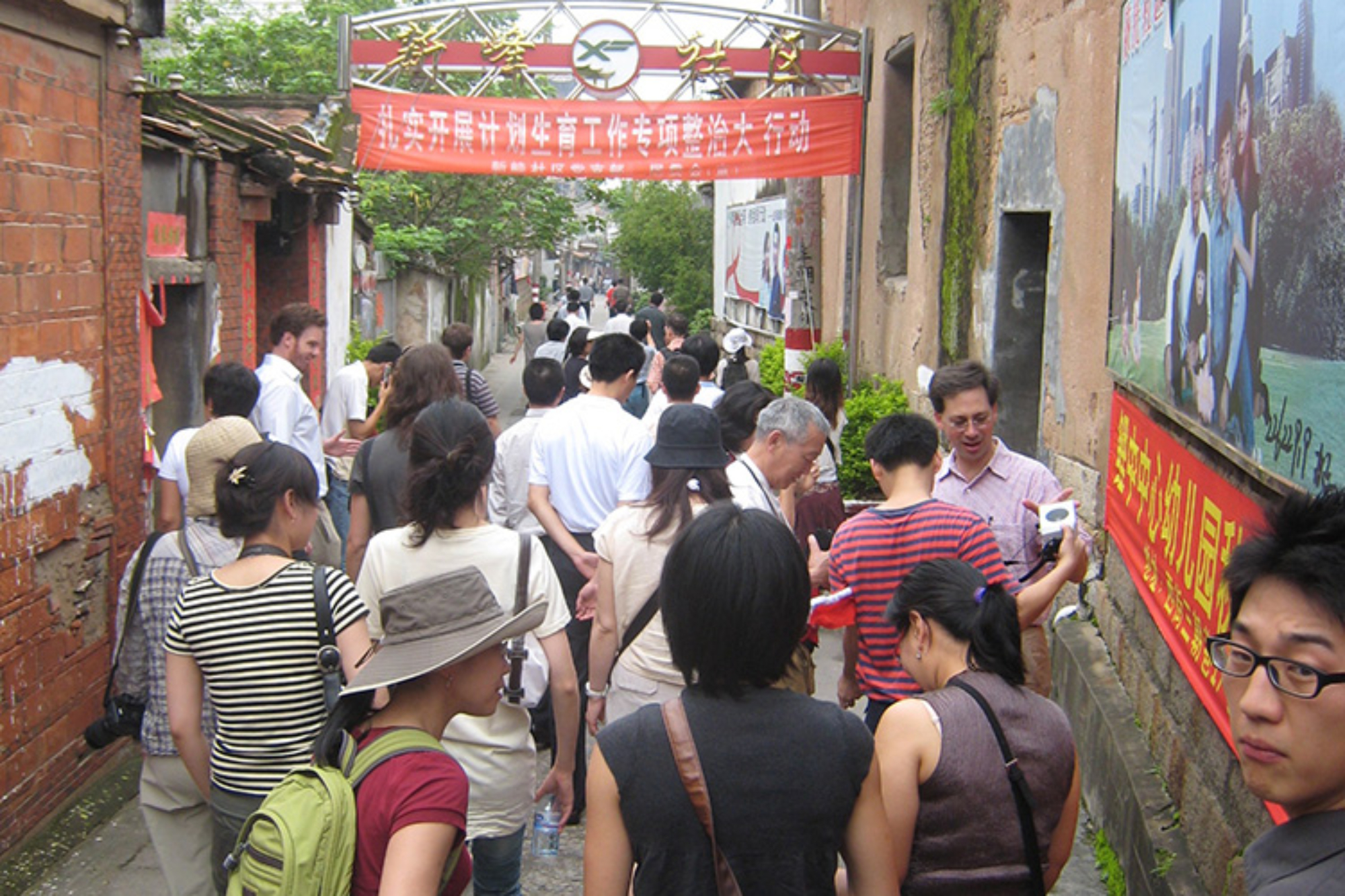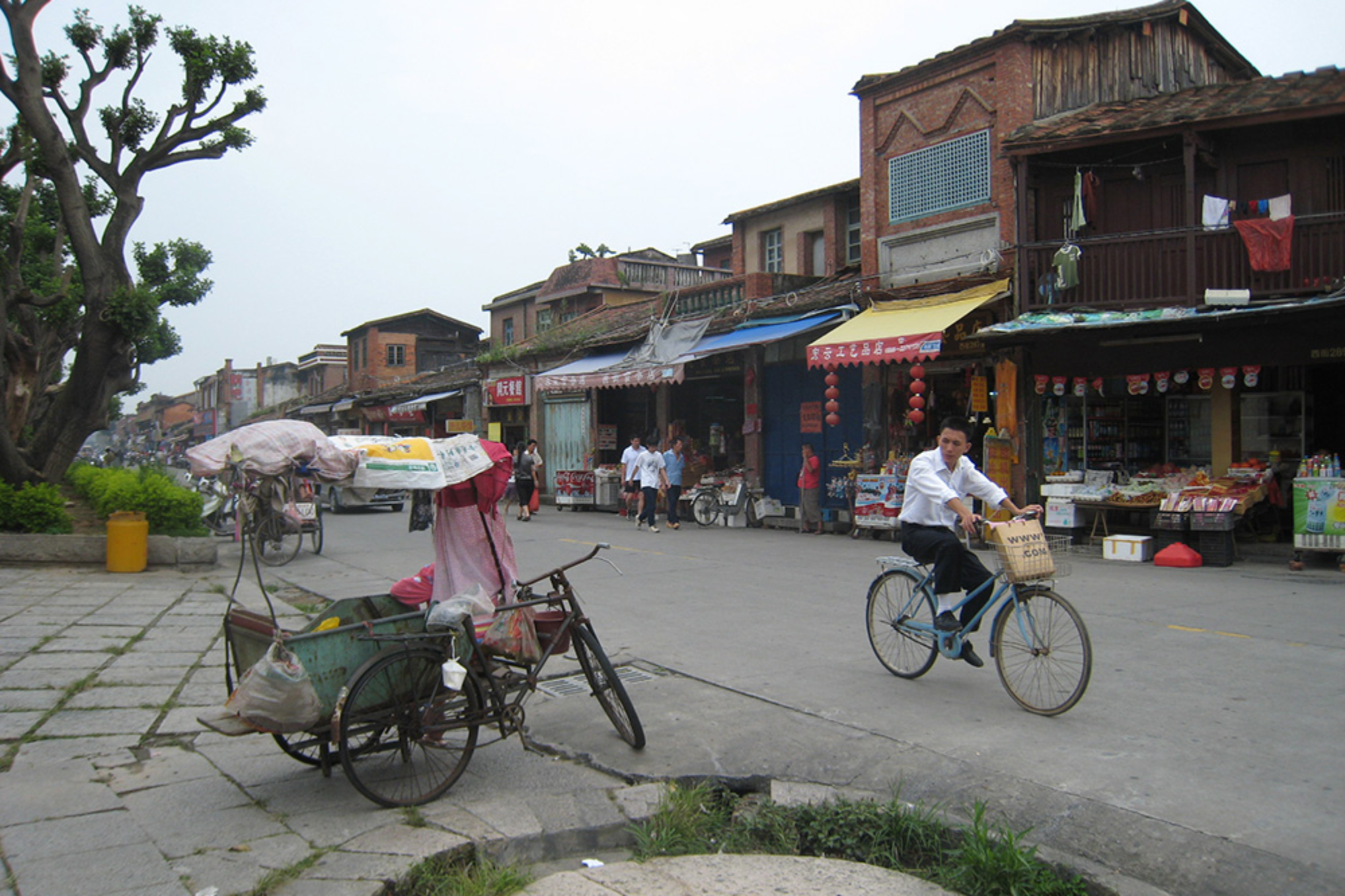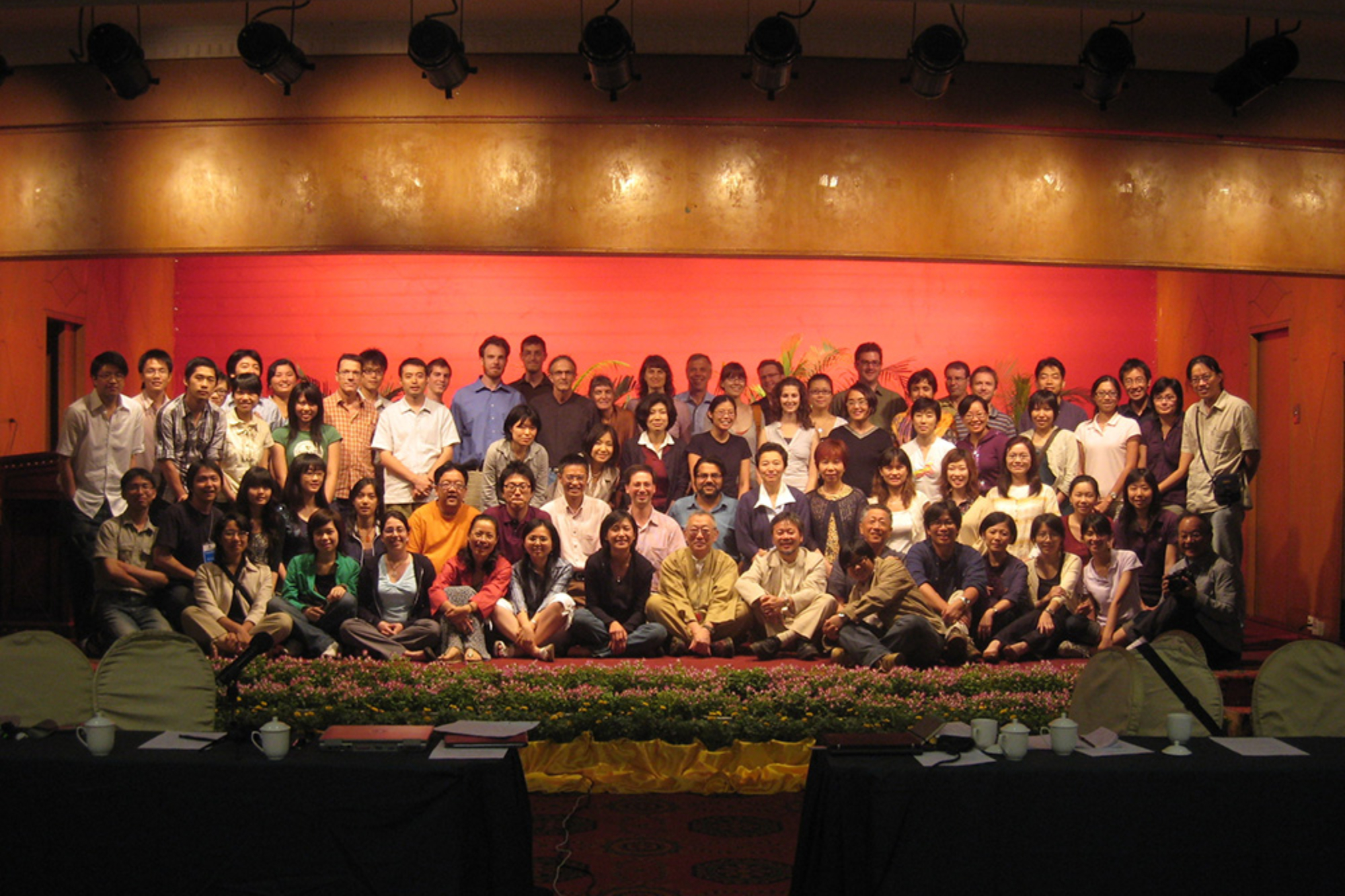The 6th Conference of the Pacific Rim Community Design Network
18-21 June 2007
The first Pacific Rim Community Design Network conference in Mainland China, this 6th conference of the Network was hosted by the city of Quanzhou, where members of the Network have been engaged in community planning and design for a number of years. It was hoped that this conference would be more than an opportunity for old members of the Network to gather again, update each other on research and experience, and welcome new members; by gathering in Quanzhou, the Network has an opportunity to raise the profile of community design in Quanzhou and elsewhere in China.
Towards this goal, the local government has hosted the conference in tandem with a conference of the Minnan (southern Fujian Province) Urban Alliance of Municipalities. The Pacific Rim Network conference organizers also invited a panel of experts in community design and participatory governance from other parts of China. Also, the conference was followed by a multi-university studio led by Dan Abramson, to work with a community currently involved in an upgrading planning process. It was expected that conference participants would have an opportunity to engage in a workshop with local professionals, officials, and community members to brainstorm design and policy related to the project.
Organizer and contact:
Dan Abramson, Assistant Professor, Urban Design & Planning, University of Washington
Sponsors:
- Municipal Government of Quanzhou, Fujian Province, China
- Urban Alliance of Xiamen, Quanzhou, Zhangzhou, and Longyan Municipalities
- University of Washington, College of Architecture and Urban Planning, Department of Urban Design and Planning
As in previous Network conferences, presentations were in the form of practical case studies, research findings, pedagogical practice, or reflections. The following were suggested questions for presentations to address, that would provide thematic cohesiveness and local relevance to the conference:
- Driving forces – What local social, economic, or political changes have served as impulses for greater community involvement in design and planning?
- Preservation of identity and environmental protection – How does community design serve to bolster local identity and/or sustainability? What conflicts exist between the aspirations of local residents and the preservation of locally characteristic or ecologically sound environments? How can community design help to resolve these conflicts?
- Cross-cultural perspectives – What are the different attitudes, outlooks, and perspectives on the concept of community and the practice of community design? What are the lessons of cross-cultural collaboration? What barriers exist to the transfer of techniques from one cultural context to another, and what adaptations in technology have helped to overcome these barriers?
- Community design learning – What are the different pedagogical models of community design education? What skills need to be taught? What changes to design and planning education in general need to be made in order to foster community design? How can pedagogy specifically address the challenge of cross-cultural application and the relevance of community design?
- NGOs (NPOs) and community design – What are the roles of NGOs in community design? In the absence of a strong NGO presence in society, how can community design help to enhance civic involvement in public affairs?
- Challenges of institutionalization – What changes to government and professions are necessary to support community involvement in design and planning in a sustainable way?
- Community Design in China – How has community design been experienced specifically in China? What are its prospects?
